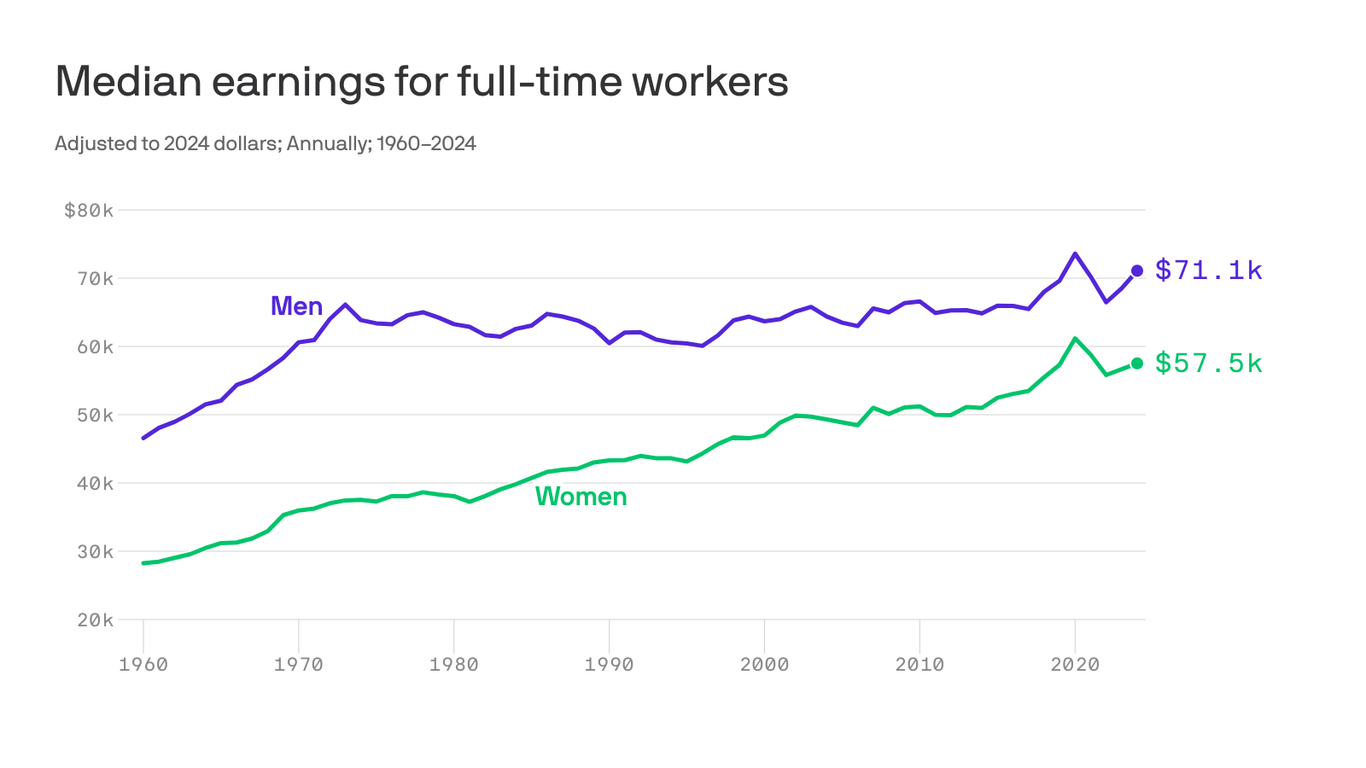
"Between the lines: Wages for workers without a high-school degree were up 5.5% last year - and that may be driving the gap, Katherine Gallagher Robbins, a senior fellow at the National Partnership for Women & Families, tells Axios. Men account for 69% full-time, year-round workers aged 25 and older without a high school degree. "It's great to see men's wages rising, it's critical to make sure women don't fall farther behind, especially as the cost of living has increased," Robbins says."
"The wage gap doesn't necessarily mean women earn less than men for the same types of jobs. Instead, it is a useful indicator of broad inequality between men and women in the labor market. Zoom out: Women make up the majority of low-wage workers in the U.S., partly because many are juggling paid work with caring for children. Jobs that can accommodate those schedules tend to pay less."
The median full-time woman earned 81% of the median full-time man in 2024, a two-percentage-point drop from 2023 and a return to 2017 levels. Median male earnings rose 3.7% to $71,090, while median female earnings remained essentially flat at $57,520. Wages increased 5.5% for workers without a high-school degree, a group that is 69% male among full-time, year-round workers aged 25 and older, which may have widened the gap. Women remain overrepresented in low-wage, caregiving-compatible jobs, face career breaks that slow wage growth, and often work in occupations that pay less.
Read at Axios
Unable to calculate read time
Collection
[
|
...
]